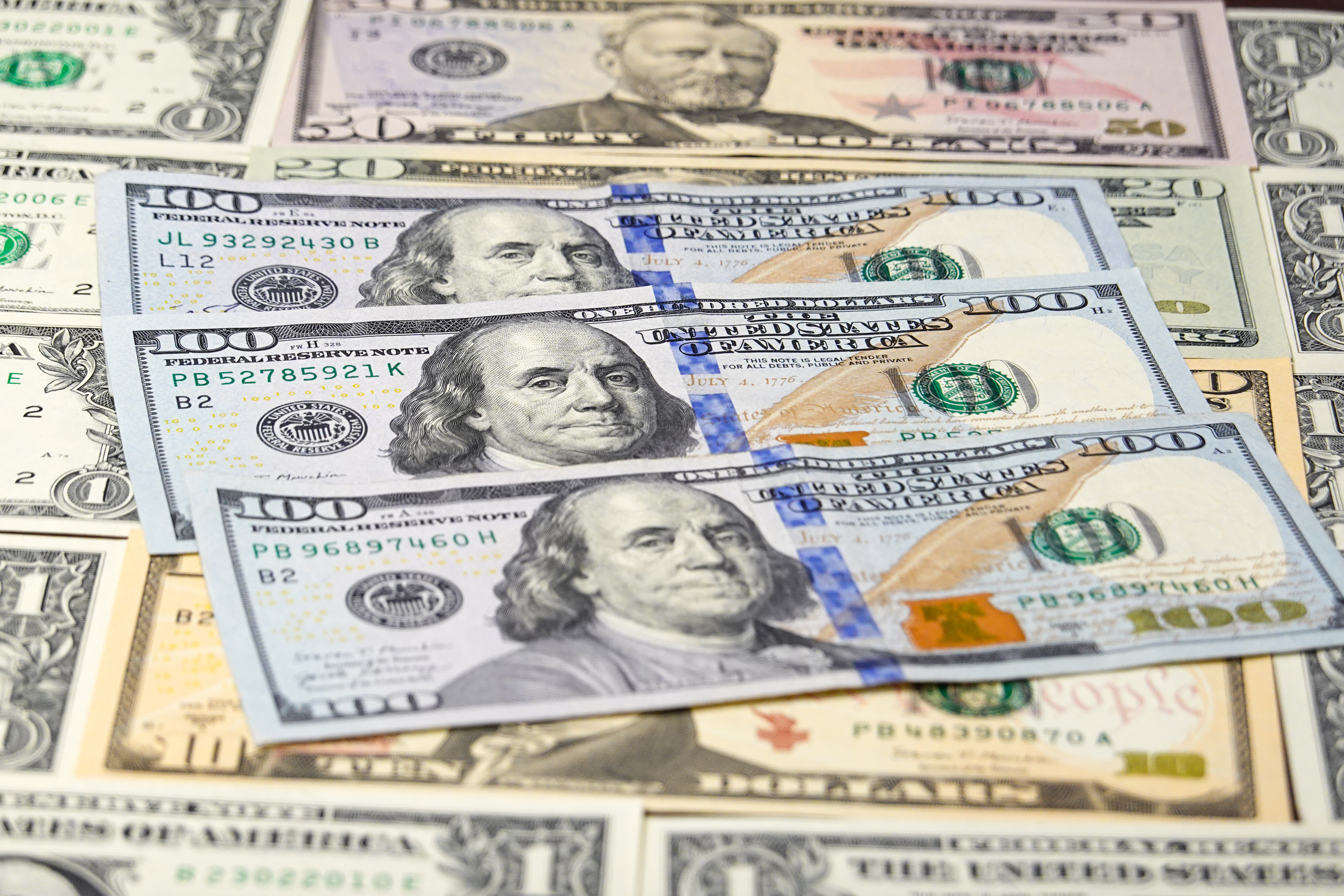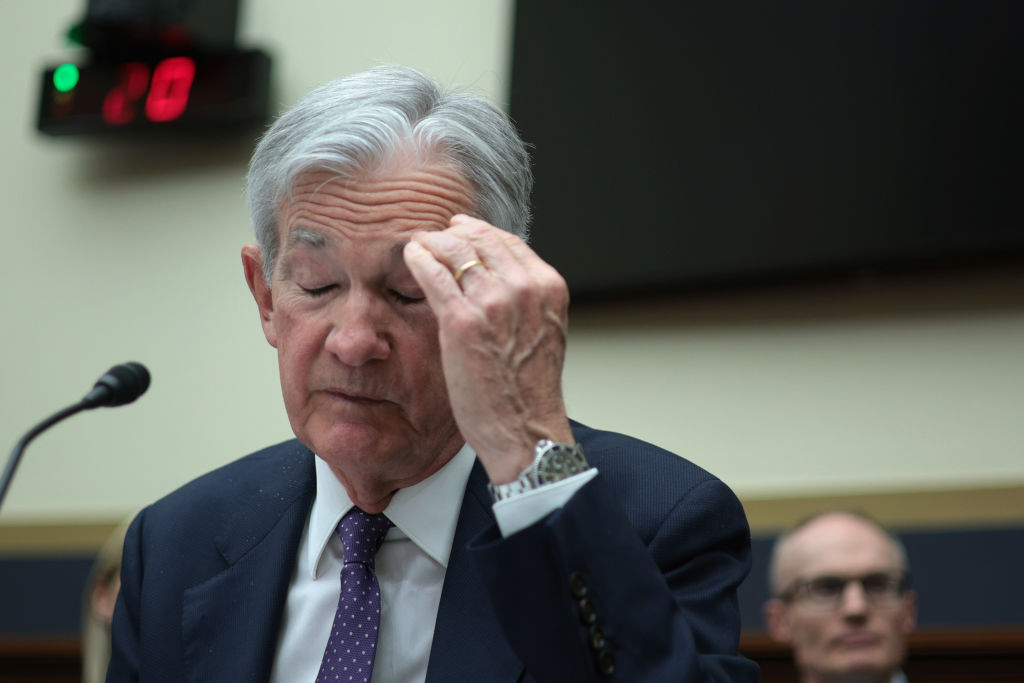Has the tipping point finally arrived for the dollar?
Stock markets around the world had a tough time last week, with investors mainly troubled by the dollar's sharp decline. John Stepek looks at the reasons for the dollar plunge - and which asset class is set to benefit.

This feature is part of our FREE daily Money Morning email. If you'd like to sign up, please click here: sign up for Money Morning.
Stock markets across the globe had a tough time of it last week. The FTSE 100 fell 1.1% to 6,122 by the end of the week, Japans Nikkei 225 shed 2.2% to 15,734, and even the seemingly unstoppable Dow Jones was knocked off its stride.
A sharp slide in the dollar was the main thing worrying investors. On Friday, the euro rose to more than $1.30, while the pound hit more than $1.93, levels not seen for more than 18 months. And this is unlikely to be the end.
MoneyWeek
Subscribe to MoneyWeek today and get your first six magazine issues absolutely FREE

Sign up to Money Morning
Don't miss the latest investment and personal finances news, market analysis, plus money-saving tips with our free twice-daily newsletter
Don't miss the latest investment and personal finances news, market analysis, plus money-saving tips with our free twice-daily newsletter
"We are just at the start of what we think will be a downtrend for the dollar - a tipping point has probably been reached," said Tim Fox of Dresdner Kleinwort Wasserstein. He expects the pound to hit the $2 mark by March next year - a level not seen since 1992.
So why the sudden plunge in the dollar?
The biggest question isn't so much why is the dollar falling now?' - it's more how has it managed to defy gravity for so long?'
The US economy is not really in a position to sustain a strong, or even particularly healthy currency. The country's current account deficit stands at more than 6% of gross domestic product. To put that into perspective, most economists believe that 4% represents the danger point for an economy.
The US needs to continue to attract foreign investors' savings to prop up that deficit - but the only way to attract foreign investors is to offer them a decent return on their funds. This is what has been holding the dollar up until recently - the prospect of rising interest rates.
But now, with the US housing market in freefall, as some have put it, and the government downgrading its expectations of US economic growth, it looks like the next move in US interest rates could be a cut. This is at a time when interest rates in the UK, Japan and particularly in Europe, are all expected to head higher in the near future.
With rising interest rates no longer on its side, while other economies are strengthening, there is nothing to keep the dollar at its current levels. "Steadily the US dollar will decline through 2007, but probably at a faster pace in the second half of the year, as people realise the Fed is going to have to cut rates," said HSBC's Paul Mackel.
The other big threat to the US dollar stems specifically from Japan. In a phenomenon known as the carry trade', speculators have been borrowing money in Japanese yen at very low interest rates, and putting the money into dollar-denominated assets, often US government bonds (known as Treasuries). Because Treasuries pay a higher interest rate than it costs to borrow yen, it's an easy way to make money.
Or so it seems. The only trouble is the currency risk. If the yen starts to rise and the dollar starts to fall, then the changing exchange rate can wipe out any gains and rapidly lead to losses, as the amount the borrower owes in yen outstrips what they have invested in dollars.
It's hard to say just how much money is tied up in the carry trade - but in May, when it last seemed that the yen was set to strengthen, other currencies buoyed by the carry trade, such as the Turkish lira, saw falls of more than 20% in the space of just a few months.
While a 20% fall in the dollar over that sort of time period would be almost unthinkable, it does highlight the extent of the threat posed by the greenback's reliance on foreign funding. In fact, former Federal Reserve chairman Paul Volcker has said: "The US borrowing requirement raises the risk of a crisis in the dollar as soon as the next two and a half years."
But what does this all mean - apart from that anyone jetting off to New York for their Christmas shopping this year is likely to find even more bargains than usual? Well, it's bad news for the FTSE 100 for a start. Many of the biggest 20 companies in the index are heavily exposed to the US, earning large chunks of revenue in US dollars.
And more broadly speaking, other markets are likely to suffer from further displays of distress in the US economy. Fears that the US consumer will stop buying up imported goods have hit the Japanese market, and European exporters will not be overjoyed at the prospect of a soaring euro.
These concerns - particularly over Japan - may well be overblown, but it could take a while for that to become apparent. In fact, the only asset that is likely to benefit unequivocally from a weaker dollar, is gold.
Now UK investors may ask - what's the point of buying gold, a dollar-denominated asset, if the dollar is falling? It's a good question. Gold may increase in dollar terms, but that's not much use if the dollar is falling against sterling.
But the point is that the dollar is the world's reserve currency. If the world's most important paper currency is losing its value, which would you rather buy as an alternative? The euro, which has been around for only slightly longer than the 21st century, and has at least one member country which is a complete economic basket case (Italy)? Or gold - which has been around for millennia, and with the exception of the past 35 years or so, has been used as a currency of some sort for that entire time?
So as demand for dollars falls, demand for gold will rise. And that means that the rise in the gold price triggered by sustained dollar weakness is likely to far outstrip the corresponding dollar fall, making it a good bet in any currency.
You can read more about how to invest in gold on our Investing in Gold page.
Turning to the wider markets
Enjoying this article? Why not sign up to receive Money Morning FREE every weekday? Just click here: FREE daily Money Morning email.
In London, FTSE 100 closed 17 points lower on Friday, at 6,122, after a fourth consecutive day of losses. However, strength in the utilities sector, notably Scottish and Southern Energy and Kelda, saw the index recover somewhat from an earlier slump. For a full market report, see: London market close (/file/22146/london-close-utilities-drag-footsie-off-lows.html)
Across the Channel, the Paris CAC-40 closed 35 points lower, at 5,389. In Frankfurt, the DAX-30 was 63 points lower, at 6,411.
On Wall Street, stocks closed slightly lower as investors kept an eye on the sharply declining dollar. The Dow Jones was 46 points lower, at 12,280. The S&P 500 ended the day 5 points lower, at 1,400, as did the Nasdaq which closed at 2,460.
In Asia, the Nikkei clawed back some of its recent losses, closing at 15,885, a 150-points gain, on Monday.
Crude oil was over 1% higher this morning, at $59.93. In London, Brent spot was at $60.19.
Spot gold was trading at $640.00 this morning, up from $638.10 in New York late on Friday.
And in London this morning, a poll published by the Confederation of British Industry (CBI) revealed that one in five companies had moved some of their activities overseas, and one in three were thinking of doing so, as a result of the heavier corporate tax burden under New Labour.
And our two recommended articles for today...
Just how low can the dollar go?
- As we've already seen this morning, the dollar is facing a bumpy road ahead. Can the Federal Reserve manage the currency's slide, or is it an impossible task? Jeremy Batstone at Charles Stanley looks at just how far the dollar could fall - find out more, by clicking here: Just how low can the dollar go?
How the government robs us all
- The inflation of the money supply is a seductively easy way to create the illusion of economic growth. But here gold commentator Paul van Eeden explains why no one - not even the Government - can create wealth out of nothing. Read more here: How the government robs us all
Get the latest financial news, insights and expert analysis from our award-winning MoneyWeek team, to help you understand what really matters when it comes to your finances.
John Stepek is a senior reporter at Bloomberg News and a former editor of MoneyWeek magazine. He graduated from Strathclyde University with a degree in psychology in 1996 and has always been fascinated by the gap between the way the market works in theory and the way it works in practice, and by how our deep-rooted instincts work against our best interests as investors.
He started out in journalism by writing articles about the specific business challenges facing family firms. In 2003, he took a job on the finance desk of Teletext, where he spent two years covering the markets and breaking financial news.
His work has been published in Families in Business, Shares magazine, Spear's Magazine, The Sunday Times, and The Spectator among others. He has also appeared as an expert commentator on BBC Radio 4's Today programme, BBC Radio Scotland, Newsnight, Daily Politics and Bloomberg. His first book, on contrarian investing, The Sceptical Investor, was released in March 2019. You can follow John on Twitter at @john_stepek.
-
 The most influential people of 2025
The most influential people of 2025Here are the most influential people of 2025, from New York's mayor-elect Zohran Mamdani to Japan’s Iron Lady Sanae Takaichi
-
 Millions of parents are missing out on up to £720 a year in extra pension cash – are you affected?
Millions of parents are missing out on up to £720 a year in extra pension cash – are you affected?A mum who narrowly missed out on the pension boost said she “never knew the government rule existed” and wants other parents to use it
-
 The challenge with currency hedging
The challenge with currency hedgingA weaker dollar will make currency hedges more appealing, but volatile rates may complicate the results
-
 Can Donald Trump fire Jay Powell – and what do his threats mean for investors?
Can Donald Trump fire Jay Powell – and what do his threats mean for investors?Donald Trump has been vocal in his criticism of Jerome "Jay" Powell, chairman of the Federal Reserve. What do his threats to fire him mean for markets and investors?
-
 Freetrade’s new easy-access funds aim to beat top savings rates
Freetrade’s new easy-access funds aim to beat top savings ratesFreetrade has launched an easy-access exchange traded fund (ETF) range - here’s how the ETFs work and how they compare to the savings market
-
 Go for value stocks to insure your portfolio against shocks, says James Montier
Go for value stocks to insure your portfolio against shocks, says James MontierInterview James Montier, at investment management group GMO, discusses value stocks and slow-burn Minsky moments with MoneyWeek.
-
 Where do we go from here?
Where do we go from here?Features A new series of interviews from MoneyWeek
-
 As China reopens, why pick an income strategy?
As China reopens, why pick an income strategy?Advertisement Feature Yoojeong Oh, Investment Manager, abrdn Asian Income Fund Limited
-
 Income in the USA
Income in the USAAdvertisement Feature Fran Radano, manager on The North American Income Trust
-
 The challenge of turbulent markets
The challenge of turbulent marketsAdvertisement Feature Today, ISA investors face one of the most challenging economic environments seen in recent years. However, good companies can still thrive, even in the toughest economic conditions. That’s why BlackRock’s fund managers focus on these businesses when they’re looking for investment opportunities.
